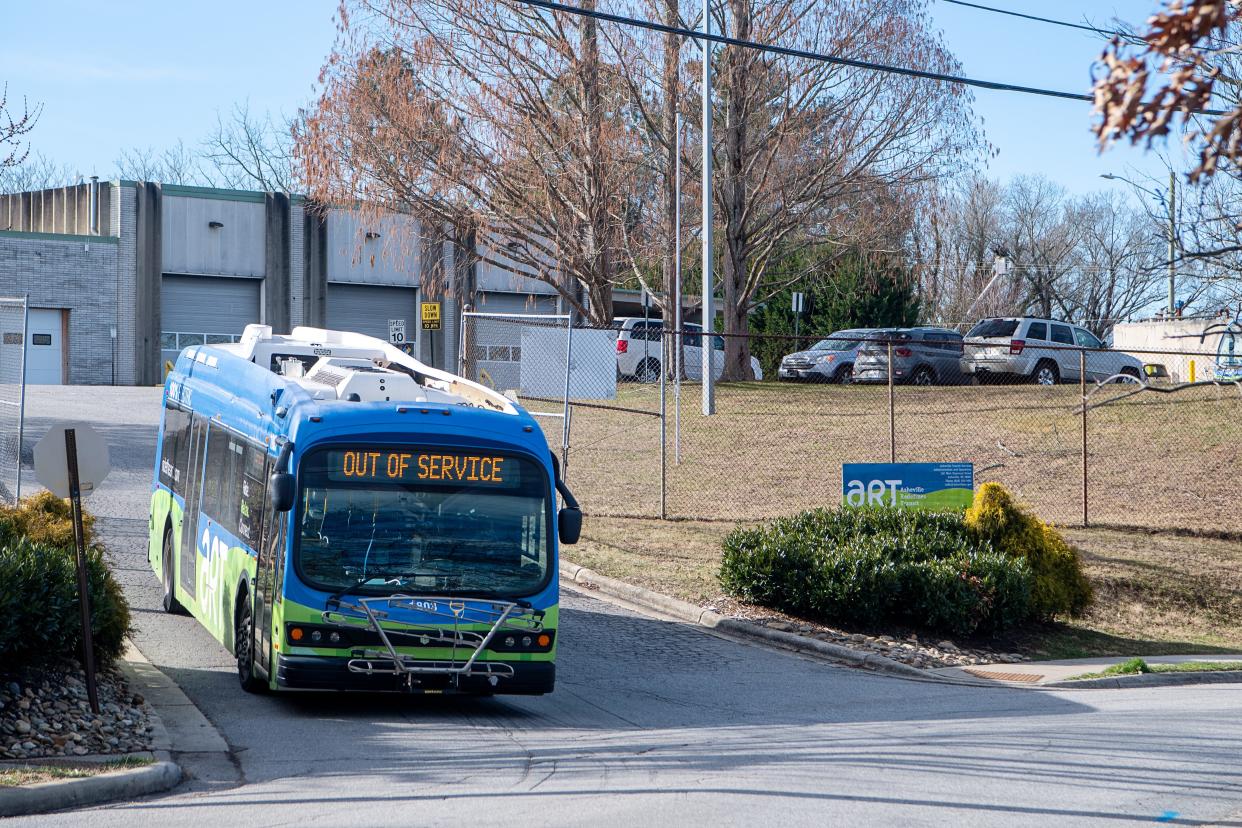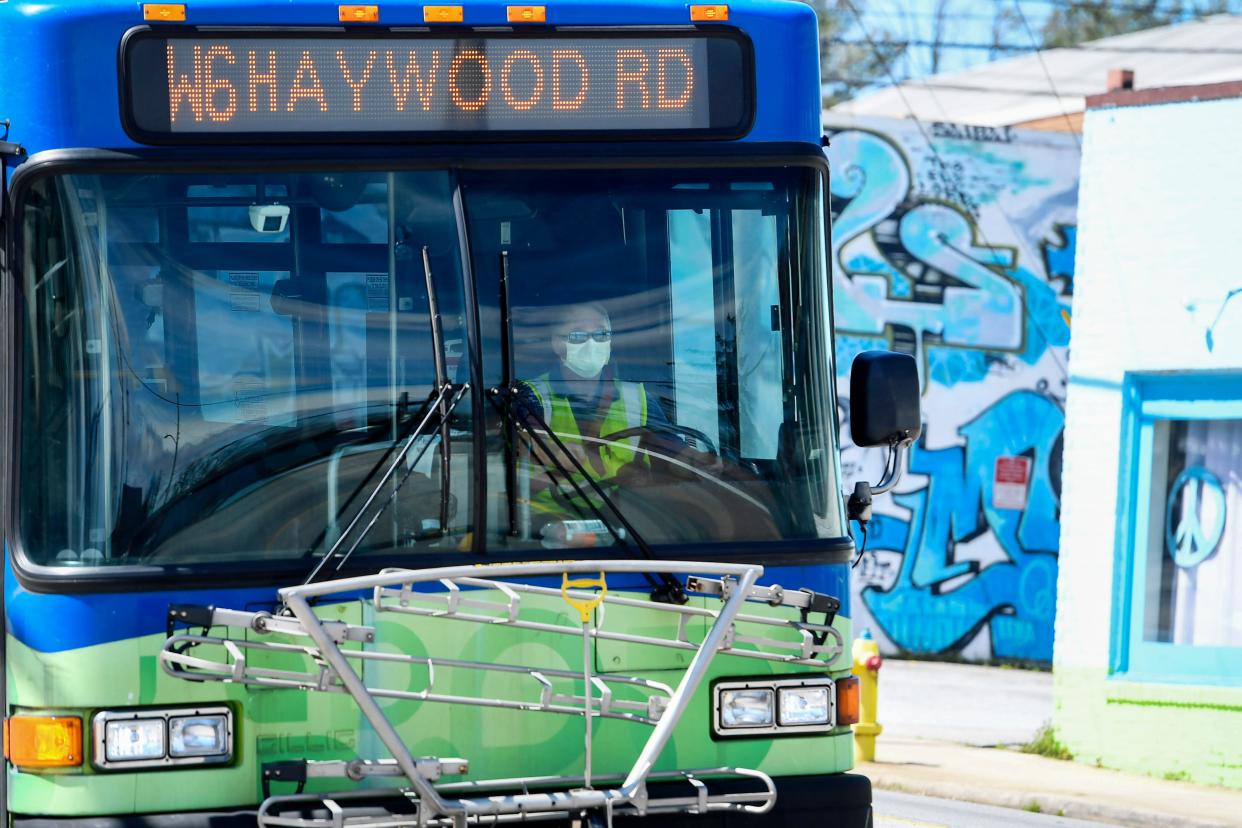How can Asheville improve its public bus system? $300K study proposed
ASHEVILLE - Funding initially slated for a regional transit master plan, in partnership with Buncombe County, will likely be redirected to a "city specific" study, says the city's transportation department.
The city allocated $300,000 as part of its fiscal year 2024 budget to evaluate "service options, financial resources, fleet and capital needs, connectivity opportunities, and potential governance models." The budget document said Buncombe County would provide matching funds.
But the county "did not choose to participate and provide funding, so the study did not take place," said Amber Wagner, the city's transit planning manager.
There's been "a lot of conversation" around the use of that $300,000, left in limbo, said Assistant City Manager Rachel Wood at an April 18 City Council briefing. Rather than use it directly for bus route extensions, staff recommends it be reallocated to fund a Comprehensive Operations and Financial Assessment, focusing on "post-COVID" changes in travel patterns and demographics.

Its most recent transit master plan, a 10-year outlook adopted in 2018, did not include a funding strategy for expansion. A 25% service increase, representing only some of the Year 1 recommendations, was implemented in January 2020, on the cusp of the pandemic.
Asheville Rides Transit has 18 bus routes, the Citizen Times has reported previously, extending out the city's arteries north, south, west and east. The 170, a route that takes riders out as far as Black Mountain, runs only every two hours. Two South Asheville routes that serve the airport and Biltmore Park run every 90 minutes; 10 run every hour; and five others every 30 minutes.
'At a deficit'
The pandemic triggered a "significant slowdown" for the system, said interim Transportation Director Jessica Morriss, and exacerbated challenges around driver shortages. Mirroring nationwide trends, ridership numbers plummeted.
While ridership has begun to see an uptick, the system is "operating at a deficit." For the last two years, the city has used federal COVID relief funds to help fill the gap, and its budget has historically been subsidized with money from the general and parking funds.
Ridership numbers:
Fiscal year 2021: 1.35 million
Fiscal year 2022: 1.32 million
Fiscal year 2023: 1.38 million
Fiscal year 2024 (projected): 1.58 million
The city's share of annual Federal Transit Administration non-competitive formula grant funding has decreased over the years due to changes to the allocation formula made by the Metropolitan Planning Organization in 2015, dipping 19% from 2015-2023.
ART is also facing the end of its eight-year, $55.8 million contract with RATP Dev USA for operations and maintenance of ART. As is standard practice, the city will re-bid for the service.

Since 2016, the city's transit investments have increased substantially, Morriss said. Additional revenue is needed to maintain services at existing levels, while funding is also needed for fleet purchases and facility improvement.
"There is a need for us to zoom out, look at our system's performance and health of our service delivery, and make sure we are utilizing our resources effectively and meeting the needs of our community," Wagner said.
The recommended Comprehensive Operational and Financial Assessment, or COA, would:
Evaluate current transit performance.
Identify operational improvements and efficiencies.
Assess needs for future Transit Master Plan recommendations and other more recently discussed possibilities, including the county's Ferry Road project.
Evaluate additional revenue needs and partnership opportunities.
Prepare for next year's transit contract rebidding.
Objectives could include exploring better use of electric and other types of fleet vehicles in ART service and evaluate the transit system's strengths, weaknesses and opportunities.
It represents a "scope-change," Wagner said, shifting focus from a joint planning effort with Buncombe County to city specific needs and ART improvements.
It could result in service-wide changes, the April 18 presentation said, such as possible route realignment, elimination of low ridership routes and service delivery alternatives, like micro transit.
Next steps?
Over the next several months, staff will draft solicitations for the transit operations contract and the COA, Wagner said. Contracts for these services would require City Council approval.
Another presentation is scheduled for the May 9 City Council briefing to discuss transit facility needs.
More: Answer Woman: What is going on with Asheville's electric buses?
More: Asheville council considers pay increases for staff; debates dipping into fund balance
Sarah Honosky is the city government reporter for the Asheville Citizen Times, part of the USA TODAY Network. News Tips? Email shonosky@citizentimes.com or message on Twitter at @slhonosky. Please support local, daily journalism with a subscription to the Citizen Times.
This article originally appeared on Asheville Citizen Times: How can Asheville improve its public bus system? $300K study incoming
